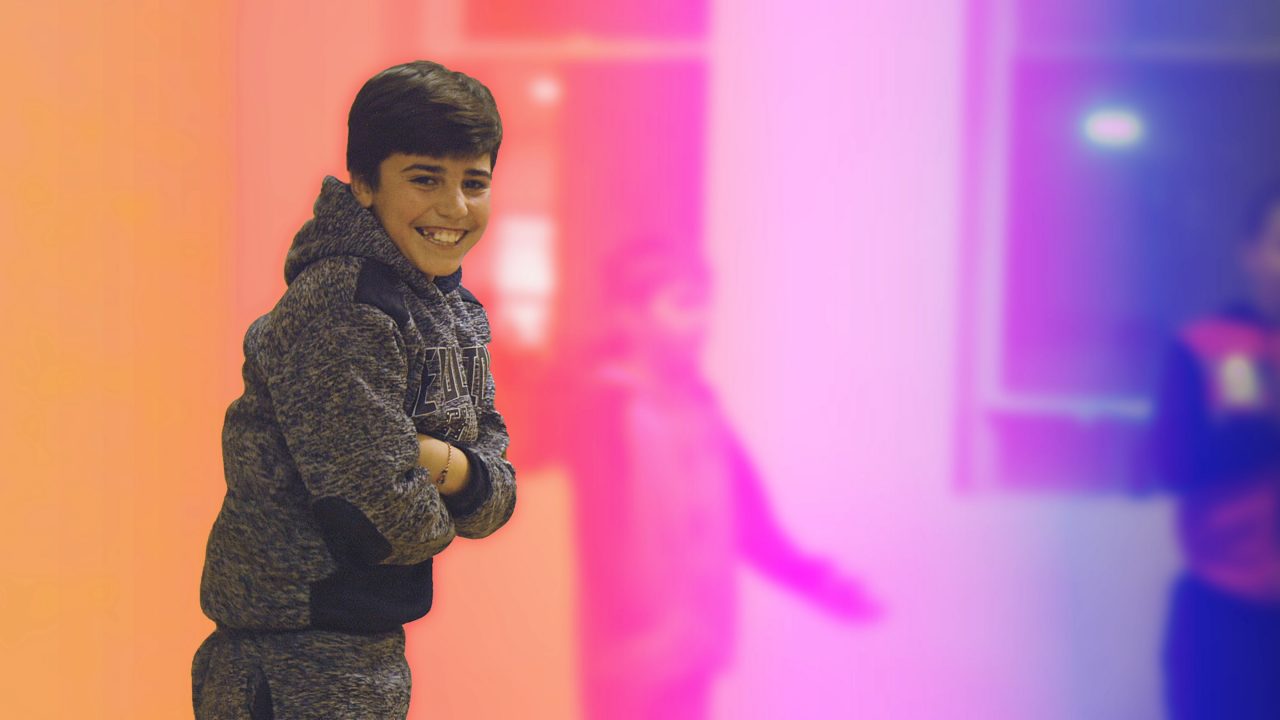
Mini-Lesson for Angel Peacock
Mini-Lesson for Angel Peacock
Mini-Lesson for Angel Peacock
Themes:
- Social Studies: Contemporary Issues
- Diversity/Pluralism: Diversity in Communities
- Health/Personal Development: Identity, Mental Health
Ages: 12–14
Angel Peacock, Peter Svatek, provided by the National Film Board of Canada
Keywords/Topics: Refugee, Asylum Seeker, Persecution, Identity
Guiding Question: Why is it important for Canada to accept and support refugees and asylum seekers?
Summary: The documentary film Angel Peacock profiles the experience of a 12-year-old boy named Dawod who is adapting to life in London, Ontario, after fleeing persecution in Iraq. Dawod and his mother, Naro, were held captive by ISIS for months, targeted because they are Yazidi, a Kurdish-speaking group that has been persecuted for centuries. They managed to escape by running through forests for nine days and nights without food or water. Not only does Dawod have to adapt to a new country and a new language, he is also dealing with the trauma of his life experiences while he waits for his brother to join him in Canada.
Activity 1) Roundtable Discussion
Watch the full clip by logging onto CAMPUS using the timecode: 2:31-6:21
In this activity, students research and debate several important questions about Yazidi refugees in Canada.
Roundtable Discussion Activity:
- Have students research Yazidi refugees in Canada, as well as the history of the Yazidi minority in Iraq and Syria.
- Suggested Links:
- https://www.theguardian.com/world/2014/aug/07/who-yazidi-isis-iraq-religion-ethnicity-mountains
- https://www.tvo.org/article/meeting-the-mental-health-needs-of-londons-yazidi-refugees
- https://www.theglobeandmail.com/canada/article-for-a-yazidi-refugee-in-canada-the-trauma-of-isis-triggers-rare/ *contains some sensitive content*
- Set students up around a circular table or arrange their desks in a U shape.
- Co-create ground rules or norms for discussion to ensure that everyone has the right to speak and no one dominates the conversation. Provide accountable talk stems to give students ideas for beginning each statement.
- Start with a guiding question such as: What do Yazidi refugees need in order to be best supported in their new countries? Who should be financially responsible for caring for refugees? Should countries that fund wars be forced to pay?
- Have students contribute their opinions either in a planned, clockwise direction or as volunteers.
- Assessment option: Draw a map of where students are sitting in the circle. Use symbols or numbers to represent the level of student contributions.
Go Deeper
Use statistics from the Government of Canada to analyze the number of refugees and asylum seekers accepted by each province. Create a graphic showing which provinces accept the greatest numbers (for example, a frequency chart or a map illustrating population density). Why might certain provinces accept greater numbers than others?
Activity 2) Identity Map
Watch the full clip by logging onto CAMPUS using the timecode 10:30-12:07.
Questions for viewing:
- How is Dawod’s life experience different from other children his age?
- How might his experiences impact his behaviour and attitude towards school?
- How has your school experience been impacted by your own life events?
Watch the full clip by logging onto CAMPUS using the timecode 19:31-20:43.
As you watch the documentary, make a list of all the different experiences that have affected Dawod and may change how he feels about going to school each day. What different parts make up his identity? Complete the graphic organizer below to sum up all the elements that contribute to who he is. Add symbols and pictures to help illustrate the map. Create your own identity map and consider how your own experiences have affected who you are today.
Go Deeper
Use the information from your identity chart to create a split self-portrait of yourself or of Dawod. On one side of the page, sketch a realistic drawing of the subject’s face. On the other side, fill in all the different parts of the subject’s identity that may not be visible to the eye. Use a variety of colours to emphasize the importance of each element.
Activity 3) PSA to Support New Canadians
Watch the full clip by logging onto CAMPUS using the timecode 13:43-14:36
Questions for viewing:
- How many refugees would you estimate Canada accepts every year? What has impacted your assumption?
- How many Yazidis would you estimate have had to leave their country? How many children?
- After hearing the story of Dawod and his family, do you think Canada should make a greater effort to support Yazidi refugees? What needs to be done to best support them in their first few months in Canada? How can schools best support child refugees?
Create a public service announcement (PSA) to inform people in your community about how they can help support refugees, or as a petition to the government to make changes that will better support child refugees in schools. Use the medium of your choice: print, video, audio, etc. Include statistics from Citizenship and Immigration Canada to help strengthen your arguments.
Go Deeper
Why might a government deny refugees? Research some of the reasons proffered when refugees are denied from Canada and other countries. Do you think this is fair? Why or why not?
Melissa Johnston is a K–12 Learning Coach for the Toronto District School Board. Over the past 10 years, she has integrated technology, media, and social justice into her teaching across all subjects in the junior and intermediate grades. She loves inspiring students to take risks in their learning and to question the status quo. Melissa has a degree in Journalism from Ryerson University and is a specialist in French as a Second Language.
Pour lire cet article en français, cliquez ici.
Discover more Mini-Lessons | Watch educational films on NFB Education | Watch educational playlists on NFB Education | Follow NFB Education on Facebook | Follow NFB Education on Pinterest | Subscribe to the NFB Education Newsletter




We sometimes do ourselves a lot of harm to create an educational environment that will satisfy the majority of students. From a gripping film that throws us to the ground in a few minutes, you know how to pinpoint the problem and I like the way you proceed as a necessary path for the students to appropriate a cause, not only the stakes of a community but also the cause of refugee children who grew up in horror contexts to come here to live a new life!
Bravo for your excellent teaching!